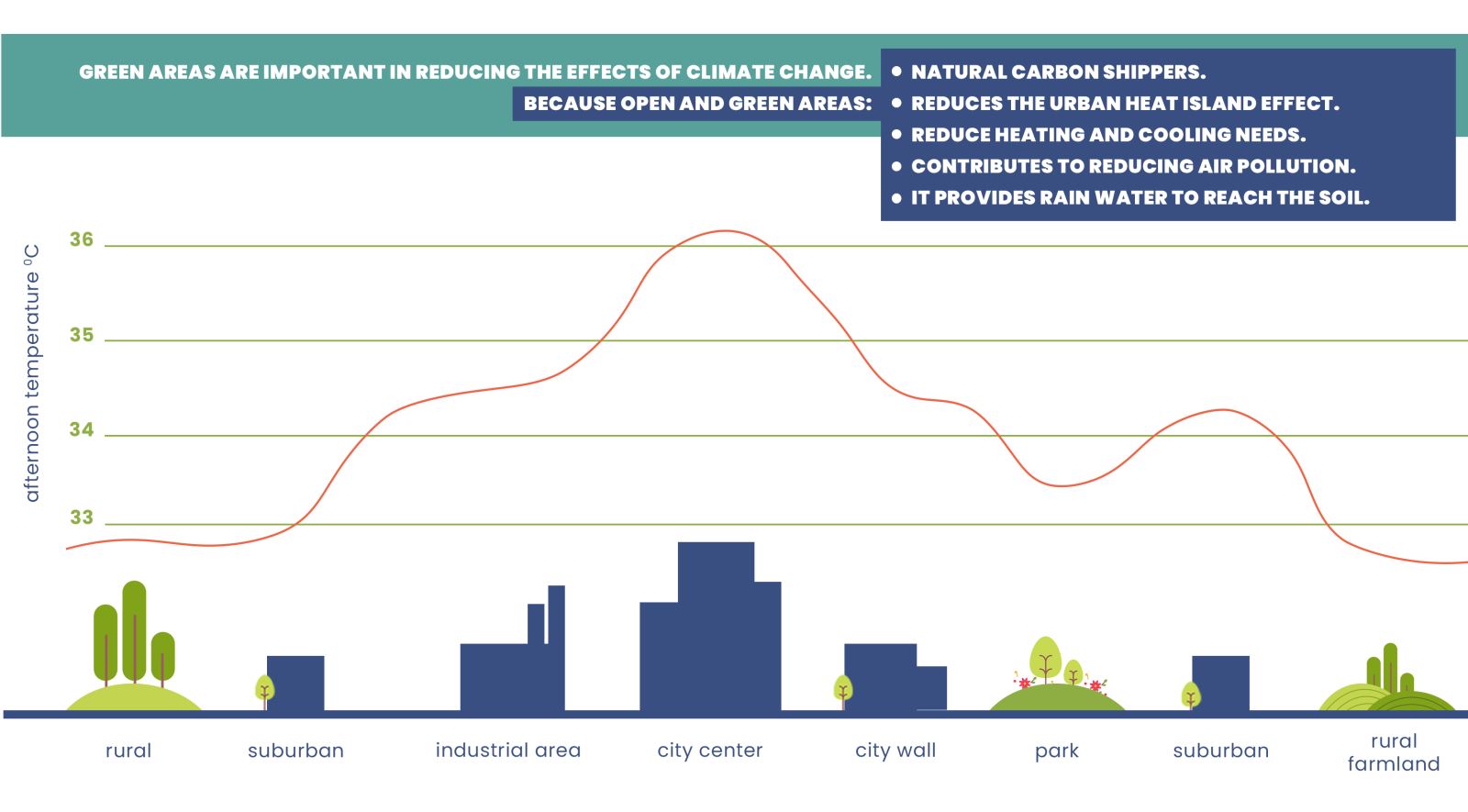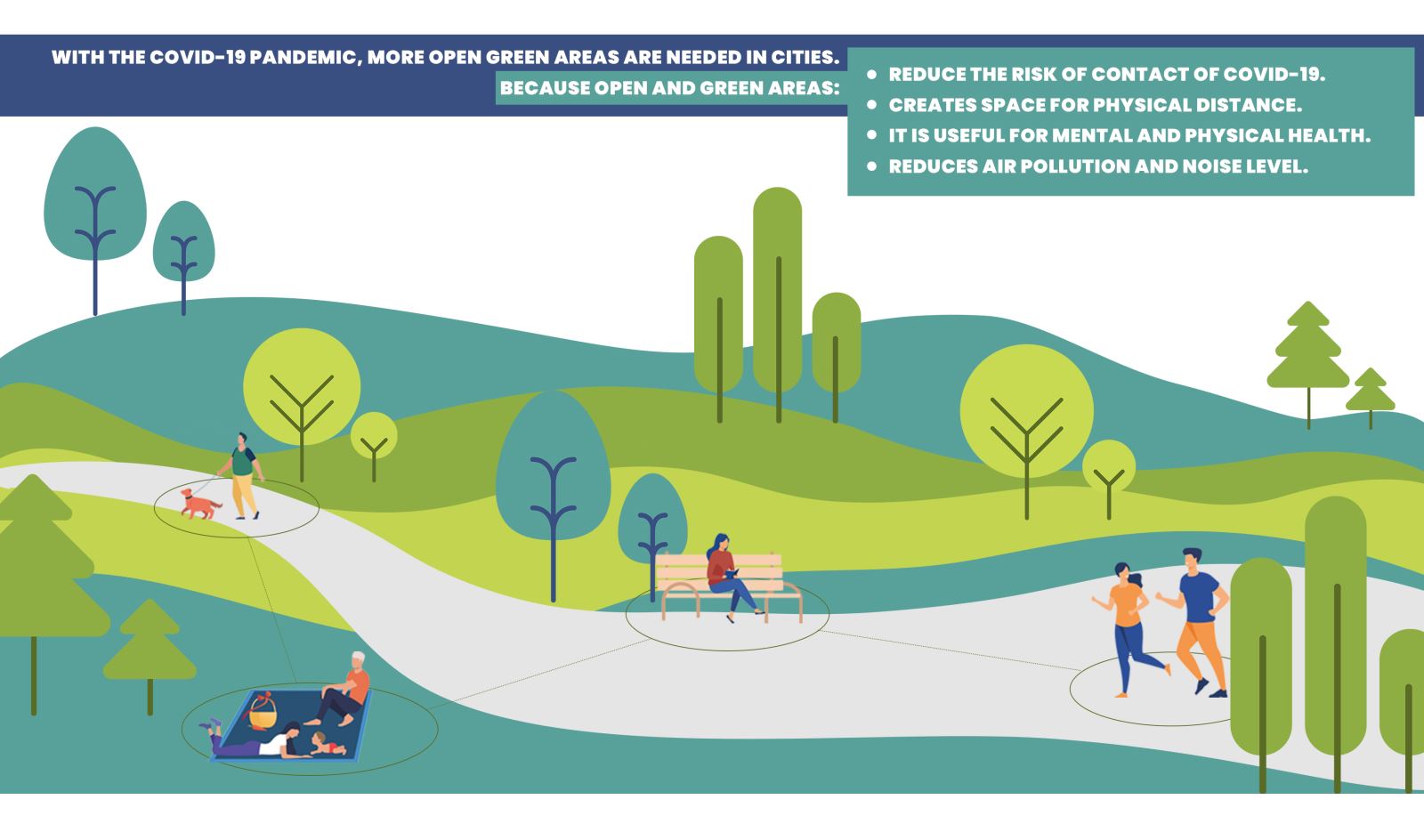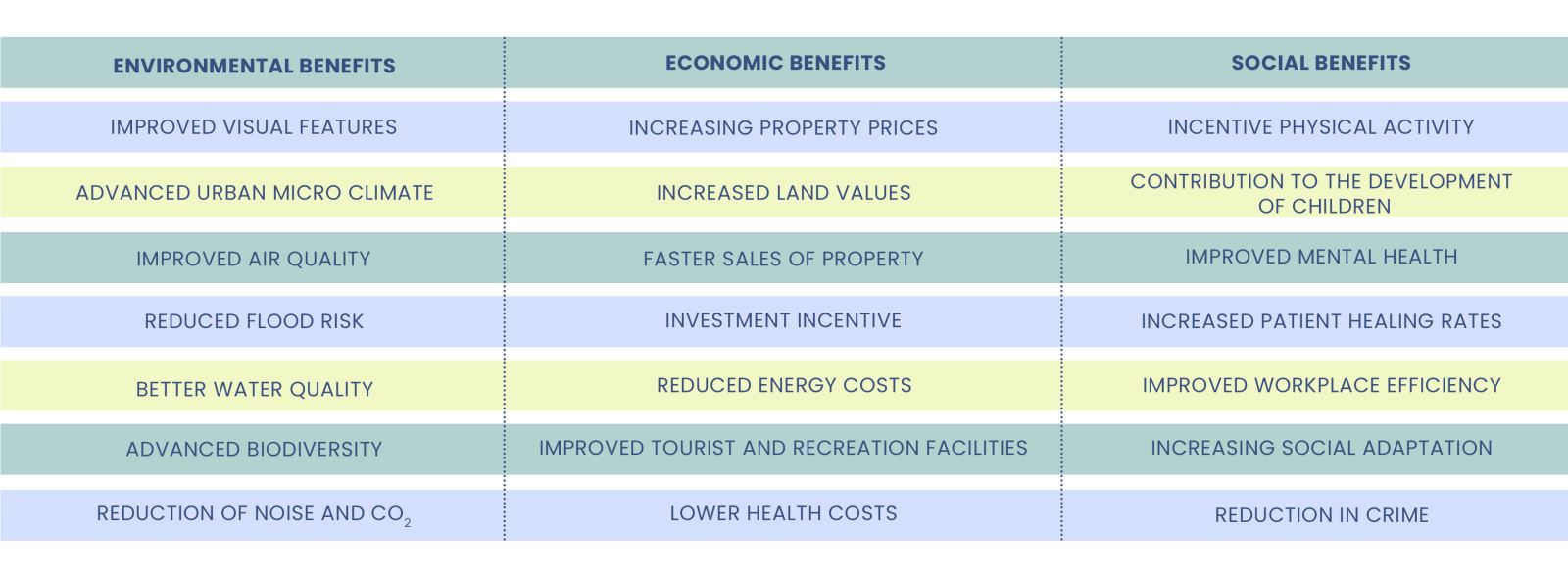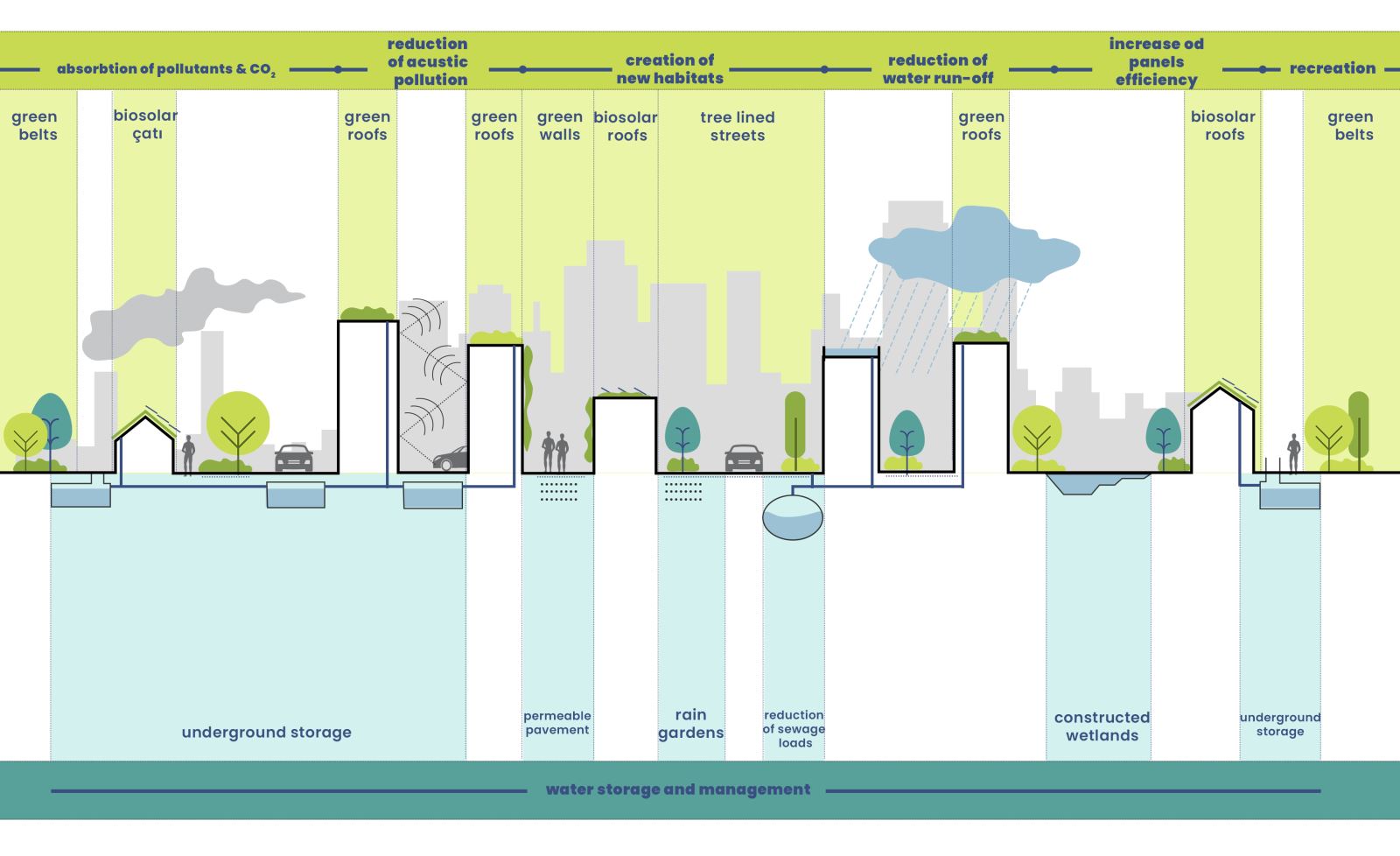The need for open and green spaces has increased after the negative effects of global climate change due to increasing surface temperature and greenhouse gas emissions in the world and the COVID-19 pandemic experienced as of 2019. Increasing the amount of open and green spaces and ensuring their continuity creates an effect that will improve the quality of life in cities. In order to achieve this, the green infrastructure system needs to be planned and implemented.
This section includes the importance of open and green spaces in global climate change and the COVID-19 pandemic and the benefits of the green infrastructure system and its implementation tools.
Open and Green Spaces in Combating Climate Change
The average surface temperature on Earth increased by about 1.18°C from the late 19th century to 2020. This is a change largely driven by increased emissions of carbon dioxide in the atmosphere and other human activities. It is possible to talk about two important human factors that have a great impact on climate change:
Greenhouse gases
Concentrations of major greenhouse gases such as carbon dioxide, methane, and nitrous oxide have increased since the Industrial Revolution due to human activities. These greenhouse gas emissions increased the greenhouse effect and caused the earth's surface temperature to rise. Using fossil fuels has a great impact on climate change.
Reflecting or absorbing solar energy
Activities such as large-scale agriculture, road construction, and deforestation change the reflectivity of the earth's surface and cause local warming or cooling. This effect creates heat islands in urban centers that are warmer than the surrounding area. The reason why these areas are warmer is that buildings, sidewalks, and roofs tend to reflect less sunlight from natural surfaces.
Urban forests, parks, and other urban green spaces that have not lost their vegetation and soil characteristics have critical importance in creating climate-friendly cities. While these areas contribute to the reduction of carbon emissions, they also contribute greatly to adaptation to climate change.

Open and Green Spaces in the COVID-19 Pandemic
Urban green spaces have many health-related benefits, including longer life expectancy, fewer mental health problems, better cognitive functioning, and better mood. It also reduces air pollution, heat and noise levels and contributes to CO2 sequestration. Therefore, it has an important role in the fight against the climate crisis. In addition, green spaces can improve ecosystems and increase biodiversity in cities, particularly through well-designed green infrastructure throughout the city.
COVID-19 as a new coronavirus-related disease emerged in Wuhan, China in December 2019 and quickly spread to the rest of the world as a pandemic. The rapid increase in infections and deaths has jeopardized the capacity of global public health systems around the world, forcing governments to take exceptional measures to contain the pandemic. Although these measures differ from country to country, "physical distance" and "quarantine" measures have been taken in most countries.

Green Infrastructure System
The Green Infrastructure Statement was published by the European Commission in 2013. According to this statement, Green Infrastructure; It is a tool to provide ecological, economic and social benefits with natural solutions, to understand the benefits that nature provides to society and to mobilize investments to maintain and develop these benefits. Green Infrastructure is based on the principle of consciously integrating the many benefits that people derive from nature into spatial planning and regional development. Green infrastructure, which has many benefits compared to gray infrastructure, does not constitute a constraint on regional development. However, it encourages natural solutions whenever possible. In some cases, it can offer an alternative or complement to standard gray solutions.
Green infrastructure is among the most widely, economically viable and effective tools to combat the effects of climate change and to help people adapt to or mitigate its adverse effects.
Benefits of Green Infrastructure System

Implementation Tools and Effects of the Green Infrastructure System
